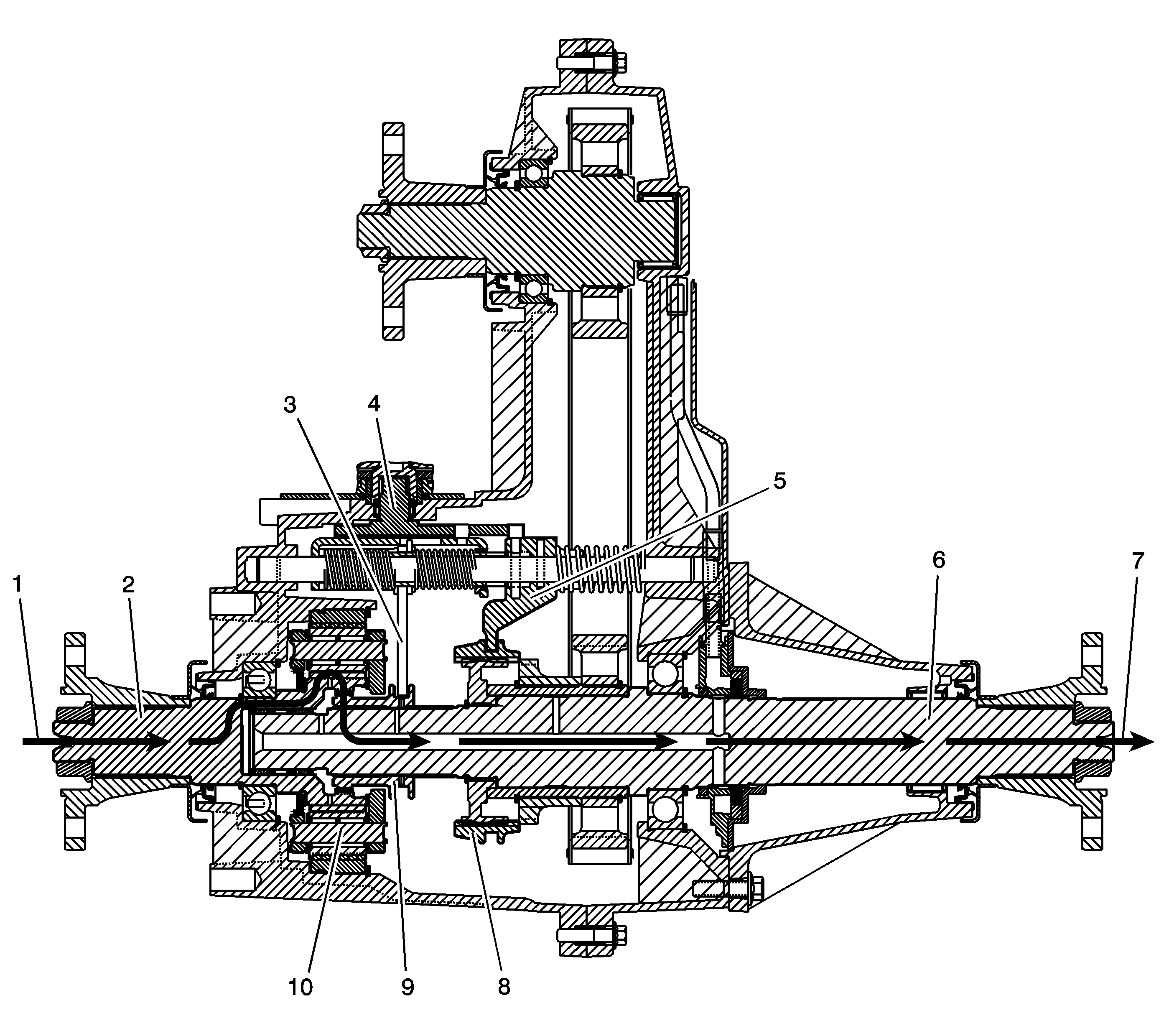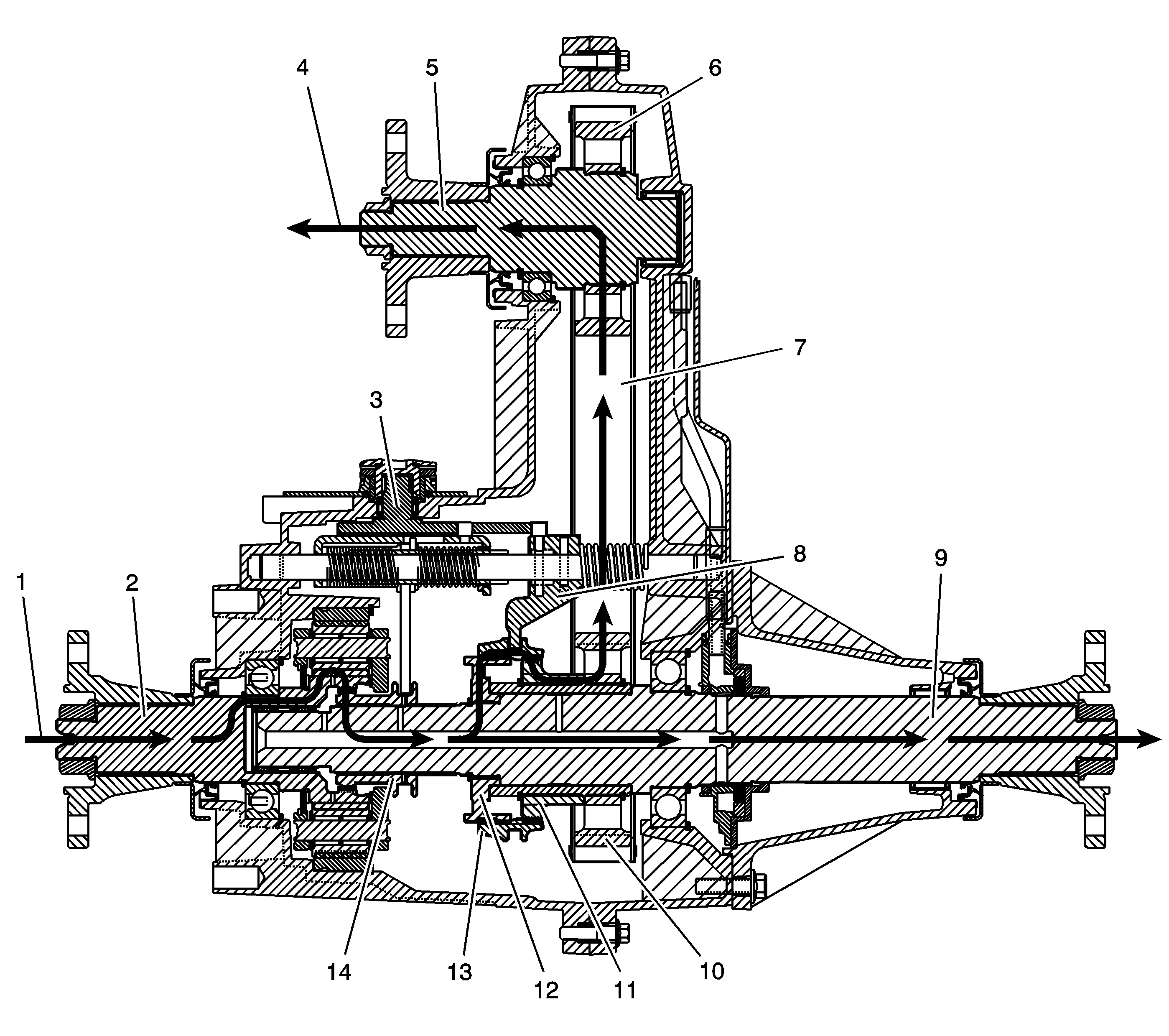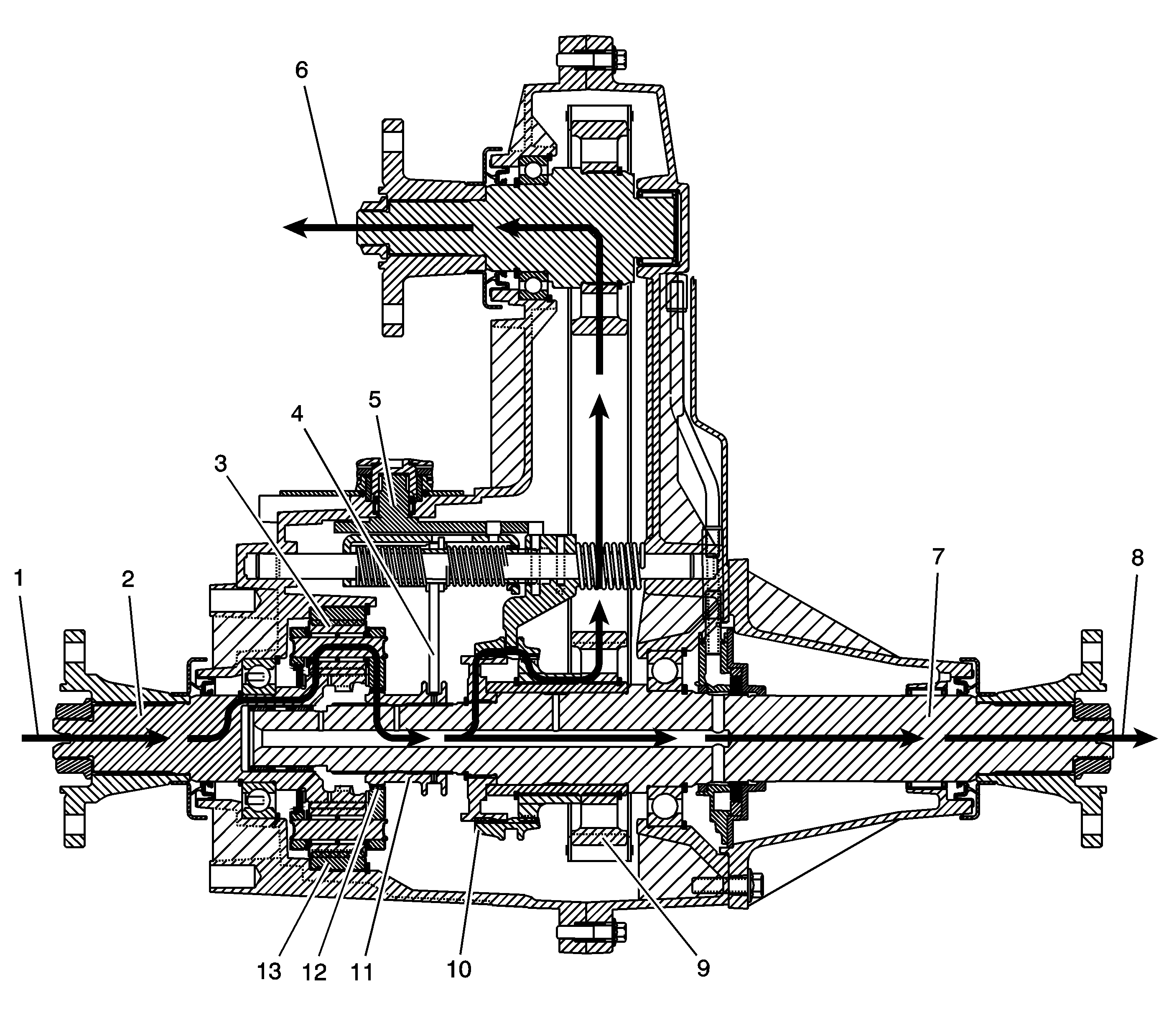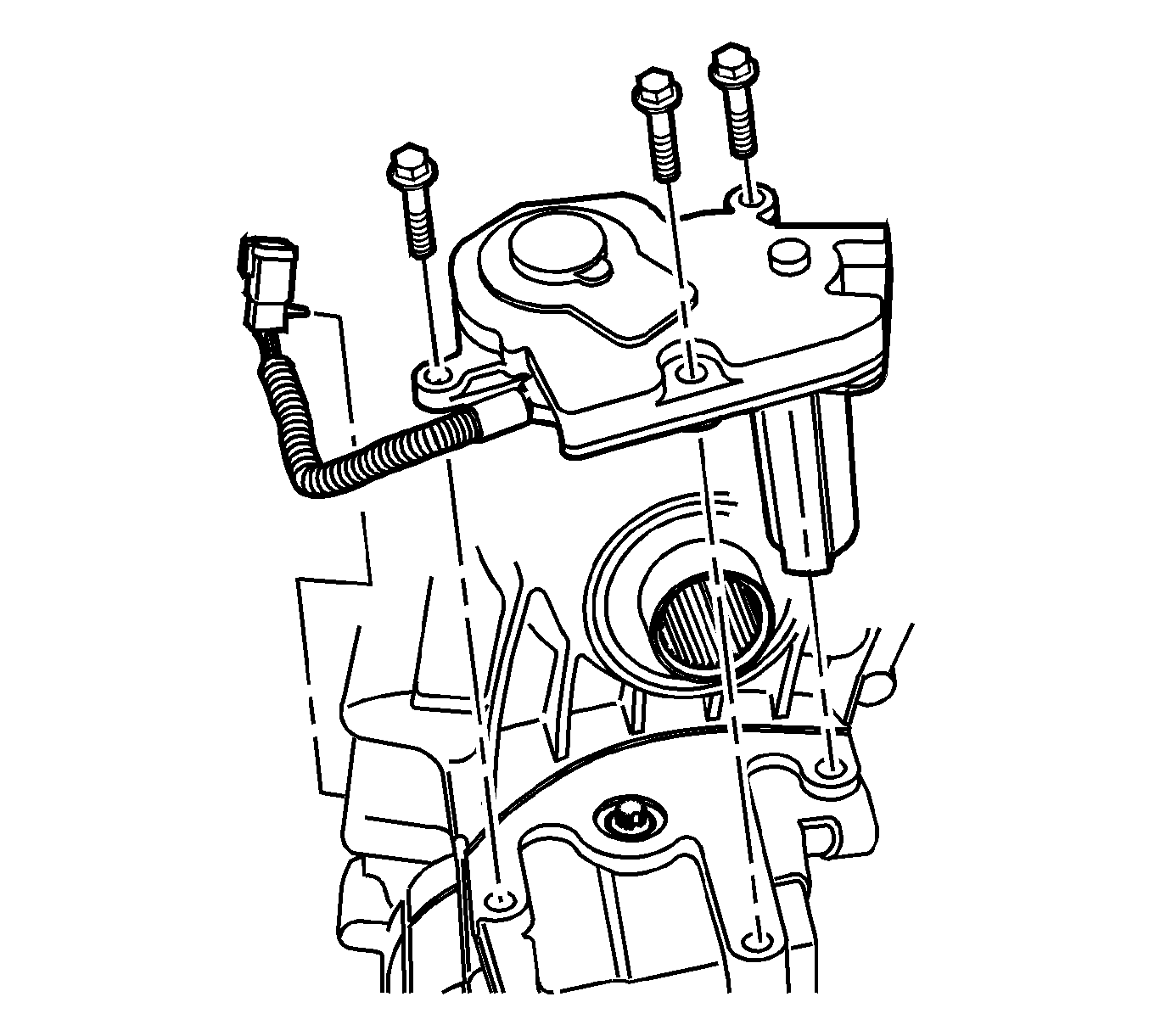Transfer Case Shift Control Switch

The NVG 273 transfer case features a 3 mode rotary shift control switch located on the instrument panel. When the ignition is in the RUN position, the transfer case shift control module starts monitoring the transfer case shift control switch to determine if the driver desires a new mode/gear position. At a single turn of the transfer case shift control switch, the lamp of the new desired position begins flashing to inform the driver that the transfer case shift control module has received the request for a new mode/gear position. The lamp continues to flash until all shifting criteria has been met and the new mode/gear position has been engaged. Once the new mode/gear position is fully active, the switch indicator for the new position remains ON constantly. In the event that the transfer case shift control module can not or will not complete the shift, the indicator returns to the previously selected position; this is a Transfer Case Shift Control Switch Indicator Flashes, then Returns to Previous Mode condition.
The NVG 273 transfer case provides the driver with 4 manual mode/gear positions:
| • | 2HI - 2 Wheel Drive high range |
| • | 4HI - 4 Wheel Drive high range |
| • | 4LO - 4 Wheel Drive low range |
| • | NEUTRAL |
The driver may choose to select any of these mode/gear positions while the vehicle is stopped. However, the transfer case will not allow a shift into or out of 4LO unless the following criteria has been met:
| • | The ignition switch is in RUN. |
| • | The automatic transmission is in NEUTRAL. |
| • | The vehicle speed is below 0 km/h (0 mph). |
This transfer case also has a NEUTRAL position. NEUTRAL position may be obtained only if the following criteria has been met:
| • | The ignition switch is in RUN. |
| • | The automatic transmission is in NEUTRAL. |
| • | The vehicle speed is below 0 km/h (0 mph). |
| • | The transfer case is in 2HI mode. |
Once these conditions have been met, turn the switch clockwise as far as it will go for 10 seconds. When the system completes the shift to NEUTRAL, the red NEUTRAL lamp illuminates.
A shift to the NEUTRAL position allows the vehicle to be towed. In the NEUTRAL position, the rear propeller shaft rotates the transfer case rear output shaft, in turn rotating the oil pump, thus providing constant lubrication during towing.
2WD Mode Power Flow

The transfer case is shifted by an encoder motor on the sector shaft. The cam shaped sector (4) rotates and moves the high/low range shift fork (3) or the 2/4 wheel drive mode shift fork (5). Depending on the selected mode or range, the shift forks move either the high/low range sleeve (9) for the high/low range planetary assembly (10) or the synchronizer sleeve (8) for the 2/4 wheel drive mode. In 2WD mode, the engine power from the transmission (1) is delivered to the input shaft (2). The engagement teeth on the inside of the input shaft (2) are engaged to the outer teeth on the high/low range sleeve (9). The high/low range sleeve (9) is slip splined to the mainshaft (6). The engine power flows from the high/low range sleeve (9) to the mainshaft (6) and delivered to rear propeller shaft (7).
4HI Mode Power Flow

In 4HI mode, the engine power from the transmission (1) is delivered to the input shaft (2). The engagement teeth on the inside of the input shaft (2) are engaged to the outer teeth on the high/low range sleeve (14). The high/low range sleeve (14) is slip splined to the mainshaft (9). During a shift mode from 2HI to 4HI, the cam profile on the sector (3) pushes the 2/4 wheel drive mode shift fork (8) and the synchronizer sleeve (13). The sleeve engages to the 2/4 wheel drive synchronizer gear (11), which is splined to the drive sprocket (10). The engine power flow for driving the front propeller shaft (4), now travels from the mainshaft (9) to the synchronizer hub (12), which is splined to the mainshaft (9). The power flows from the synchronizer hub (12) to the synchronizer sleeve (13) to the 2/4 wheel drive synchronizer gear (11) and then to the drive sprocket (10). The power flow is transmitted by a chain (7) to the driven sprocket (6) on the front output shaft (5) and to the front propeller shaft (4). The front and rear propeller shafts are being driven at equal RPM, therefore giving a 4 wheel drive mode. This mode should only be used for extra traction. Using this mode on dry pavement causes tire scuffing when turning.
4LO Mode Power Flow

During a range shift request to 4LO, a separate cam profile, on the same sector (5), moves the high/low shift fork (4). The high/low shift fork (4) moves the high/low range sleeve (11) rearward. The high/low range sleeve (11) outer teeth disengage from the input shaft (2) high-speed teeth. The high/low range sleeve (11) outer teeth then engage in the high/low planetary carrier teeth (12). The power flow is now from the transmission (1) to the planetary teeth on the input shaft (2) to the planetary gears (3) in the carrier. Rotating the planetary gears (3), which are engaged in the annulus gear (13), rotates the planetary carrier. The planetary carrier delivers the power to the high/low range sleeve (11). The high/low range sleeve (11) then drives the mainshaft (7), providing a 2.72:1 gear ratio reduction to the mainshaft (7). The 2/4 wheel drive synchronizer sleeve (10) is still engaged to drive the drive sprocket (9), as in the 4HI position, providing the engine power to the rear propeller shaft (8) and to the front propeller shaft (6).
NEUTRAL Mode Power Flow
Shifting to the NEUTRAL position, the high/low range sleeve is centered between the input shaft and the high/low planetary carrier. The high/low range sleeve is not engaged with either the input shaft or the high/low planetary carrier teeth. The 2/4 wheel drive synchronizer is in the 2WD mode position.
Electrical Components
Below is a list of major components that make up the automatic transfer case (ATC) system.
Transfer Case Encoder Motor

The transfer case encoder motor consists of a permanent magnet DC motor and gear reduction assembly. It is located on the left side, drivers side, of the transfer case. When activated, it turns the sector shaft of the transfer case clockwise or counter clockwise to shift the transfer case. The encoder motor is controlled by the transfer case shift control module. This circuit consists of a driver on both the motor control A and motor control B circuits. The encoder motor is bi-directional, to allow the motor to shift the transfer case from 2HI or 4HI to NEUTRAL and 4LO positions. The transfer case encoder motor can be fully driven clockwise or counterclockwise using a scan tool. You may also monitor motor control A and B circuits using a scan tool.
The encoder motor also has a built in encoder. This device is a linear encoder. The transfer case shift control module sends a 5-volt reference signal to the encoder. The transfer case shift control module reads the voltage back based on the exact position of the sector shaft of the transfer case. The transfer case shift control module knows if a shift has been completed and if the shift is somewhere in between.
The encoder motor on the NVG 273 does not have an internal brake like the NVG 246. The encoder motor is not serviceable and must be replaced as an assembly.
Transfer Case Shift Control Module

The transfer case shift control module has been standardized for all trucks with NVG transfer cases. The transfer case shift control module contains the same hardware, boot software, and operational software found in other GM trucks with NVG transfer cases. The only difference is the calibration file downloaded into the transfer case shift control module memory. The transfer case shift control module comes with the appropriate calibrations out of the factory, but new calibrations must be flashed into the transfer case shift control module during service. This is especially important if a new transfer case shift control module is installed during service. Calibration files may be introduced irregularly. See your technical service bulletins. Refer to Control Module References for replacement, setup, and programming.
